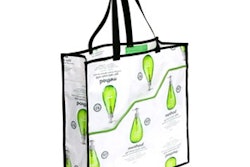1. Know your product loading orientation. There are top loading, side loading or end loading configurations available in case packing equipment. You can save a lot of time and energy in selecting vendors and equipment if you know in advance just what the appropriate loading orientation is for your needs. Design in reliability. Ask yourself if your loading orientation can change to allow for enhanced reliability.
2. Look into how the case packer reacts to variances in materials. Try to talk to other customers to find out how the case packer responds when a lower quality, damaged, or soggy (in humid conditions) piece of corrugated board is fed into it.
3. Ask other users about accessibility. When you’re talking to customer references, ask whether their operators and technicians can you get into the machine to clean it. Is the door accessible to the operators? Are guides and hold-downs too heavy to lift, or are they ergonomic and user friendly? Can operators open and close the doors? Is it easy to replenish the machine with blanks?
4. Don’t ignore a machine’s ability and method for case squaring. The squareness of the case is critical for proper conveying and palletizing downstream. As simple case squaring guides can also cause the case to drag back and skew, consider positively actuated case squaring. Accurate timing and position control are needed. A test with your actual appropriately packaged product samples is best.
5. Find out what happens when you change sizes. Some packagers have to change a lot of sizes, and some case packers require a lot of changes to do so. Is the entire machine servo controlled? Is it all mechanical adjustments? Are the size change controls and dials accessible and easy to operate? How often will you be changing over, now and in the future? Customers are demanding more customization, so be sure you select a case packer that allows your operation to have the flexibility to meet the future demands of your customers.
6. Product control in case packing is of vital importance. The ability of a case packer to handle and manage infeed pressure is key. You may be able to feed 100 feet of product, but if the case packer can’t handle it, it’s bad line design. After primary packaging, secondary packaging can seem slow. Yet, incoming product speeds, linear speeds, and cycle velocities are high. Avoid accepting low- technology drives or actuators (air cylinders for example) without closely evaluating whether the lack of velocity and position control will cause efficiency issues. A simple air cylinder to tuck a case flap may seem adequate but as time wears on, does it perform the same or could its velocity and motion change, causing jams? If a machine does jam, can the actuator properly recover?
7. Re-consider case counts. Give thought to what kind of case counts will work best for the case packer and packaging line you are considering. For example, going from four cartons to five cartons in a case will slow output by 20%. That may be the difference between running well and not running well. Having said that, flexibilty in case design necessitates a wide range of operational speeds. Again, customer requirements for differentiation in case counts must be considered for the future effectiveness of your purchase.
8. Consider glue versus tape. Tape seals the case against dust but does not necessarily hold the case square during transporting (especially during palletizing, on forklifts, etc.). Glue seals faster and makes a stronger case. Hot-melt seals very fast, needing little compression, but costs more than cold glue or tape and typically needs more maintenance. Cold glue has a superior bond with adequate compression time (which typically means a longer machine that costs more). Combination sealing can be used, such as hot/cold glue or glue/tape combinations.
2. Look into how the case packer reacts to variances in materials. 3. Ask other users about accessibility.4. Don’t ignore a machine’s ability and method for case squaring.5. Find out what happens when you change sizes. 6. Product control in case packing is of vital importance. 7. Re-consider case counts.8. Consider glue versus tape. 
























